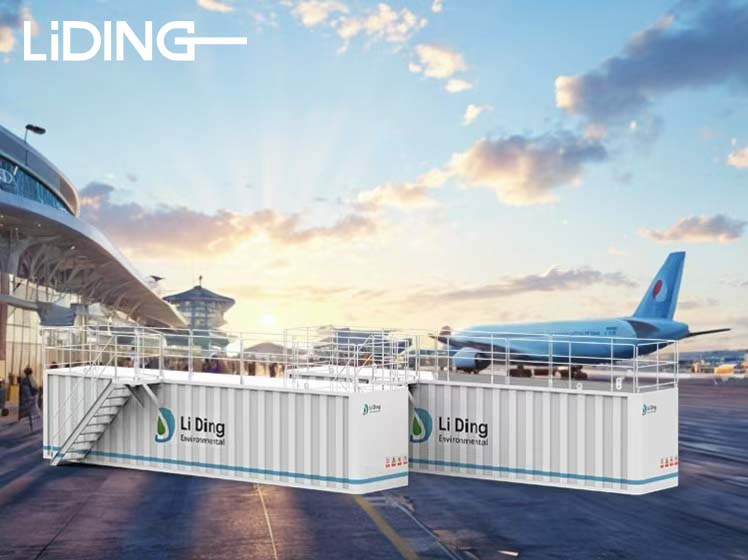As airports continue to grow in scale and passenger traffic, their environmental footprint—particularly in wastewater generation—has become a critical issue. Airport facilities such as restrooms, restaurants, staff housing, and aircraft maintenance areas produce large volumes of domestic wastewater daily. Efficient treatment is essential not only for regulatory compliance but also for maintaining a safe, hygienic, and eco-friendly airport environment.
The Challenges of Airport Domestic Wastewater Treatment
1.Modern airports face several unique challenges when it comes to managing wastewater:
2.Fluctuating load patterns due to peak and off-peak flight schedules
3.Limited space for infrastructure development in airside or landside areas
4.High discharge standards, especially near environmentally sensitive zones
5.Diverse wastewater sources, including restrooms, kitchens, and cleaning services
6.Demand for decentralized or quickly deployable treatment solutions in remote or underdeveloped airports
7.Traditional centralized wastewater plants are often too large, slow to deploy, or inflexible to meet these rapidly evolving needs.
LD-JM Containerized Wastewater Treatment Plants: A Smart Solution for Modern Airports
The JM Series containerized wastewater treatment plant is a modular, fully integrated solution designed to meet the demanding needs of airport sewage treatment. It offers modular flexibility, advanced biological processing, and rapid deployment—making it ideal for both international hubs and smaller regional airports.
Key Features and Benefits:
1.Compact, Modular Design
• Prefabricated in standardized containers for easy transportation.
• Perfect for space-limited airport environments.
2.Advanced Biological Treatment Process
• Uses proven MBR or MBBR technology to effectively treat COD, BOD, ammonia, and SS.
• Suitable for reuse in toilet flushing or landscaping to support water conservation.
3.Long service life
• Made of carbon steel and stainless steel materials, acid and corrosion resistant,life of more than 30 years.
4.Smart Operation & Remote Monitoring
• Integrated with IoT-based control systems.
• Enables real-time monitoring, remote operation, and predictive maintenance.
• Reduces manpower, improves efficiency
5.Versatile Application Scenarios
• Ideal for terminals, hangars, staff housing, and temporary facilities
• Can serve as a permanent or mobile sewage treatment plant
Sustainable and Scalable for Airport Growth
As airports worldwide move toward green infrastructure and carbon reduction goals, containerized systems like the JM Containerized Wastewater Treatment Plants provide a sustainable path forward. Their modular expandability allows airports to scale treatment capacity in line with traffic growth without extensive civil construction.
Conclusion
Efficient, scalable, and intelligent—containerized wastewater treatment plants offer the ideal solution for modern airport sewage challenges. Whether it’s a regional airport with limited infrastructure or a large international hub aiming to improve water management, LD-JM Containerized Wastewater Treatment Plants systems ensure compliance, cost-effectiveness, and operational excellence.
Post time: May-06-2025


